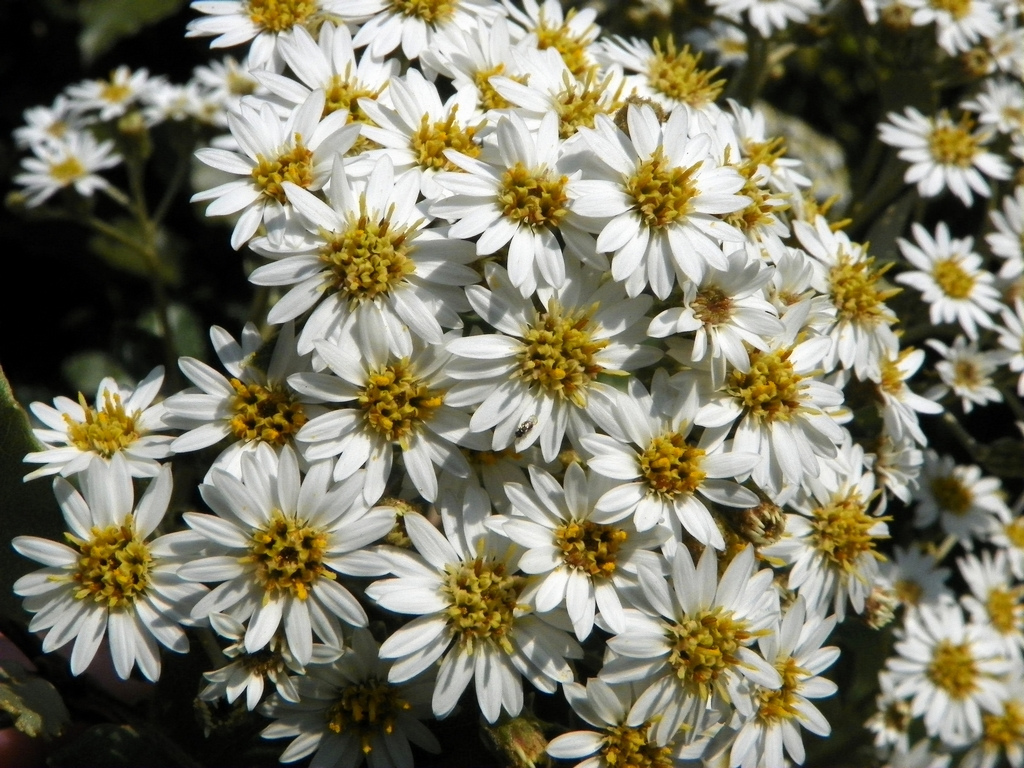
Olearia: A Closer Look
Olearia, often referred to as the “daisy tree” or “a tree daisy,” is a genus of flowering plants that belongs to the Asteraceae family. This diverse genus is predominantly native to Australia and New Zealand, where it has adapted to a wide range of environmental conditions. One of the defining features of Olearia is its striking foliage, typically adorned with silvery-gray leaves that glisten in the sunlight.
The Diversity of Olearia
One of the most appealing aspects of Olearia is its remarkable diversity. The genus comprises over 130 different species, each with its own unique features and characteristics. These variations make Olearia a perfect choice for gardeners seeking a broad spectrum of options to suit their individual preferences and garden styles.
1. Olearia Ramifications
Olearia ramifications is a compact and bushy shrub that features an abundance of small, white, daisy-like flowers. Its dense foliage, highlighted by the silver-gray leaves, makes it a charming addition to any garden. With its petite size and delicate blooms, it’s an excellent choice for small gardens or as a border plant.
2. Olearia “Silver Cloud”
For those looking for a tree-sized Olearia, “Silver Cloud” is a fantastic option. This variety can grow up to 15 feet tall, making it a perfect choice for creating a privacy screen or providing shade in your garden. Its large, leathery leaves and clusters of white, daisy-like flowers are truly enchanting.
Why Choose Olearia?
So, why should you consider Olearia for your garden? Here are some compelling reasons:
1. Versatile Aesthetics: Olearia offers an impressive range of sizes and shapes, ensuring there’s an option for every garden style. Whether you’re designing a formal garden or a naturalistic landscape, Olearia has you covered.
2. Low Maintenance: Most Olearia species are well-suited for both novice and experienced gardeners. Their adaptability to different soil types and climate conditions makes them an excellent choice for low-maintenance landscaping.
3. Silver Elegance: The silvery-gray leaves of Olearia plants provide a touch of elegance to your garden. These leaves often feature intriguing textures and shapes, adding visual interest to your outdoor space.
4. Ecological Benefits: Olearia’s fragrant blossoms are known to attract pollinators such as bees and butterflies. Additionally, many birds find Olearia an appealing habitat, contributing to the biodiversity of your garden.
Planting and Caring for Olearia
Now that you’re acquainted with the captivating world of Olearia, it’s time to explore the steps for planting and maintaining these remarkable plants.
Planting Your Olearia
1. Location Matters
Selecting the right location in your garden is crucial for the health and vitality of your Olearia. These plants thrive in full sun, although some varieties can tolerate partial shade. Ensure your chosen location receives adequate sunlight.
2. Soil Preparation
Olearia plants prefer well-draining soil. Before planting, enrich your garden bed with organic matter like compost to improve soil quality and drainage. This ensures that your Olearia has the best possible start.
3. The Planting Process
When planting your Olearia, dig a hole that is twice the size of the root ball. Position the plant in the hole, ensuring that it’s level with the ground surface. This facilitates proper root development and stability.
4. Watering Requirements
For the initial growing season, it’s essential to water your Olearia regularly to establish strong roots. Once your Olearia is well-established, it can tolerate moderate drought conditions. However, be cautious not to overwater, as this can lead to root rot.
5. Pruning for Shape
Pruning is an important aspect of Olearia care. Prune your Olearia after it has finished flowering to maintain the desired shape and size. This practice also encourages bushier growth and better flowering in the following season.
6. Mulching for Maintenance
To conserve moisture and reduce weed growth, consider applying mulch around the base of your Olearia. This simple step helps retain soil moisture and minimizes the effort required for maintenance.
Caring for Your Olearia
To ensure the long-term health and beauty of your Olearia plants, here are some additional care considerations:
1. Fertilizing: In the spring, provide your Olearia with a balanced, slow-release fertilizer. This promotes healthy growth and supports abundant flowering.
2. Pests and Diseases: While Olearia plants are generally hardy, be vigilant for common garden pests and diseases. Address any issues promptly to protect your plants.
3. Winter Protection: In regions with cold winters, take precautions to protect your Olearia from frost. You can cover them with frost cloths or, if potted, move them indoors during freezing temperatures.
Conclusion
In conclusion, Olearia is an exceptional choice for gardeners and landscaping enthusiasts who seek beauty, versatility, and low maintenance in their outdoor spaces. By selecting the right Olearia species and providing proper care, you can create a garden that’s both aesthetically pleasing and ecologically vibrant.
FAQs
1. What is the best time to plant Olearia?
The ideal time for planting Olearia is in early spring when the soil begins to warm up. This allows the roots to establish themselves before the growing season.
2. Can Olearia be grown in containers?
Yes, many Olearia species can thrive in containers, making them suitable for small gardens, patios, or balconies.
3. How should I prune my Olearia for optimal growth?
Prune your Olearia plants after they finish flowering, removing dead or overgrown branches to encourage bushier growth in the next season.
4. Are Olearia plants drought-tolerant?
Once established, Olearia plants are moderately drought-tolerant. However, it’s crucial to water them regularly during the initial growth phase.
5. Are Olearia plants invasive in certain regions?
Olearia plants are generally well-behaved and not considered invasive. Nevertheless, it’s advisable to consult with your local gardening authority for specific guidance on their growth in your region.